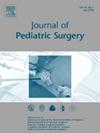Respiratory Outcomes in Children Born With Esophageal Atresia With or Without Tracheoesophageal Fistula: A Retrospective Longitudinal Cohort Study
IF 2.4
2区 医学
Q1 PEDIATRICS
引用次数: 0
Abstract
Background
The respiratory health of children born with esophageal atresia with or without tracheoesophageal fistula (EA/TEF) can be compromised.
Purpose
We aimed to study how respiratory outcomes in EA/TEF cases change with increasing age and over time.
Methods
We performed a retrospective cohort study of children with EA/TEF treated in our centre from 1991 to 2022 and compared their respiratory outcomes to those of date-of-birth matched controls. Respiratory outcomes up to 2022 were identified using International Classification of Diseases codes (ICD-9). Odds ratios (OR), rate ratios (RaR) and Cox proportional hazard models were used to compare acute respiratory infections (ICD-9:460-466), asthma (ICD-9:493), bronchitis (ICD-9:490-491), influenza (ICD-9:487-488), and pneumonia (ICD-9:480-486) between cases and controls.
Results
A total of 95 cases and 945 controls were included. Cases were more likely to have asthma (OR = 2.32, 95%CI = 1.51,3.58) and pneumonia (OR = 5.94, 95%CI = 2.37,3.65) compared to controls. Cases had more episodes of acute respiratory tract infections and bronchitis (RaR = 1.45, 95%CI = 1.32,1.58; RaR = 13.3, 95%CI = 11.2,15.9, respectively). Influenza was unaffected by EA/TEF status. By late adolescence, new or recurrent episodes of respiratory disorders were uncommon, except for acute respiratory tract infections which continued to recur more often in cases than controls into adulthood. EA/TEF survivors born in recent years experienced fewer respiratory complaints than those born in the remote past.
Conclusion
Although the respiratory outcomes of children with EA/TEF were worse than controls, survivors can expect improved pulmonary health as they approach maturity, and respiratory health is improving for the contemporaneous EA/TEF population.
Level of Evidence
Prognostic, Level III.
求助全文
约1分钟内获得全文
求助全文
来源期刊
CiteScore
1.10
自引率
12.50%
发文量
569
审稿时长
38 days
期刊介绍:
The journal presents original contributions as well as a complete international abstracts section and other special departments to provide the most current source of information and references in pediatric surgery. The journal is based on the need to improve the surgical care of infants and children, not only through advances in physiology, pathology and surgical techniques, but also by attention to the unique emotional and physical needs of the young patient.

 求助内容:
求助内容: 应助结果提醒方式:
应助结果提醒方式:


